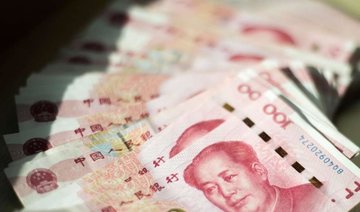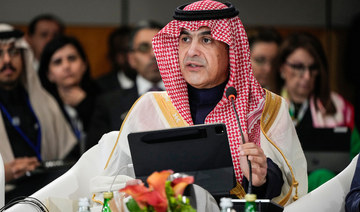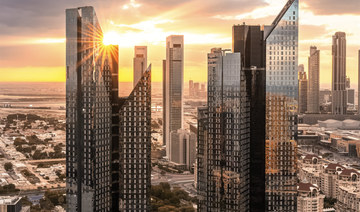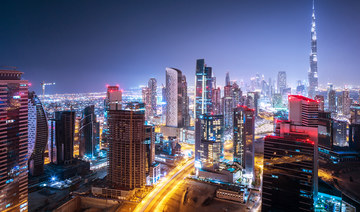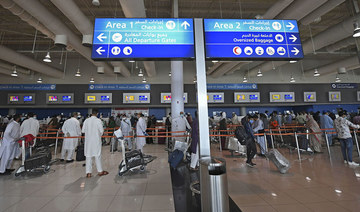SHANGHAI: China’s central bank may have to decide soon whether to intervene more forcefully to support the wobbling yuan currency as the United States readies more sweeping tariffs on Chinese goods.
After tinkering around the edges while the yuan fell for four straight months, the People’s Bank of China (PBOC) recently signaled it was not comfortable with further losses and managed to steady the currency before it tested the sensitive 7-per-dollar level.
But market watchers say renewed pressure on the currency is inevitable as the Sino-US trade war escalates, threatening to put more pressure on China’s already cooling economy.
President Donald Trump’s administration could slap tariffs on another $200 billion of Chinese imports as early as this week, the latest punitive measures aimed at forcing Beijing to improve market access, cut industrial subsidies and slash its huge trade surplus with the United States.
Such a move could sharply amplify risks to the yuan, which is already facing downward pressure from Beijing’s domestic monetary easing, rising US yields and the broad-based rise in the dollar.
“The central bank is now keeping a delicate balance, and any unexpected outcome from the Sino-US trade talks or risk events in the market could weaken such balance,” said Ji Tianhe, China rates and FX strategist at BNP Paribas in Beijing.
That could spur the PBOC into tightening foreign exchange measures, Ji said.
Analysts at Bank of America Merrill Lynch see the yuan ending the year at 6.95 per dollar, another 1.6 percent decline following the currency’s losses of about 5 percent so far this year.
Goldman Sachs maintains a forecast of 7.1 per dollar by early next year, although their senior China economist M.K. Tang expects it will strengthen thereafter as trade tensions ease.
The PBOC has taken a number of steps in recent weeks to support the currency and make it more expensive for traders to bet against it, helping to ease jitters in global markets where memories are still fresh of China’s shock devaluation in 2015.
The latest came on Aug. 24, when the central bank said it had reintroduced a “counter-cyclical factor” in its daily yuan fixing, arresting a record-breaking 10-week fall in the yuan’s value that saw it dip to 6.9340 per dollar.
State banks were seen swapping yuan for dollars in the forward market, presumably to stock up on dollars and to dampen expectations for a fall in the yuan’s value in the future.
Controls on capital flows that China imposed in 2016 and 2017 also seem to have helped prevent a recurrence of the volatility seen then, when China unsuccessfully burned through a trillion dollars worth of FX reserves to try and contain the yuan’s fall and stem capital flight.
But analysts think the PBOC has only bought itself some time, and expect renewed yuan weakness as the dollar rises.
“Further depreciation of the yuan will run the risk of triggering market panic and large-scale capital outflow,” said Jonathan Cavenagh, head of FX strategy for emerging Asia at JPMorgan Chase in Singapore.
Analysts expect the next measures won’t be as light as the ones announced so far.
Going by the PBOC’s response in 2017, it could potentially impose heavier reserve requirements on offshore yuan deposits in China, change the settlement method used in currency forward contracts or significantly raise the cost of yuan for foreign short-sellers in offshore markets.
Goldman Sachs’ Tang says it is not possible to rule out other measures to tighten capital flows, or even direct dollar-selling intervention, though he says the latter would require “quite a lot of pick up in FX outflows” to spur the bank into direct action.
For now, though, market participants still don’t know which lines in the sand the PBOC will defend most aggressively.
On the surface it appeared the PBOC was stopping the yuan from a potential breach of 7 per dollar — a level not seen since the global financial crisis a decade ago. But it also seemed to have stepped in when the trade-weighted index fell near 92 — a level it possibly felt made the yuan too cheap and which it defended in 2017.
Its willingness to cross a possible third line in the sand — China’s $3 trillion safety cushion of foreign exchange reserves — is also in doubt.
Top Chinese officials have repeatedly vowed they will not use yuan depreciation as a weapon in the trade war, while Trump has accused Beijing in recent weeks of manipulating its currency to offset the impact of US tariffs.
But a senior trader at a foreign bank in Shanghai warned that a sharp escalation in the dispute could leave the PBOC at a loss unless it put its money where its mouth is and defended the yuan more aggressively.
“If the authorities really want to stabilize the currency, they have to come up with real money. All this sleight-of-hand is not enough,” he said.
Trade war could force heavier hand from China on yuan
Trade war could force heavier hand from China on yuan
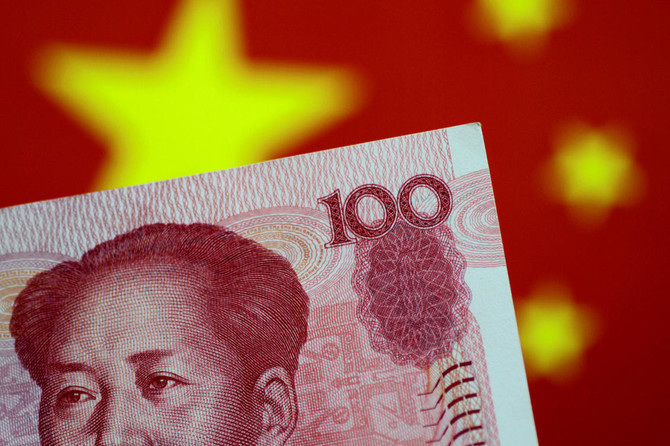
- Market watchers say renewed pressure on the currency is inevitable as the Sino-US trade war escalates
- Top Chinese officials have repeatedly vowed they will not use yuan depreciation as a weapon in the trade war
SFD, AfDB sign deal to finance development initiatives in Africa
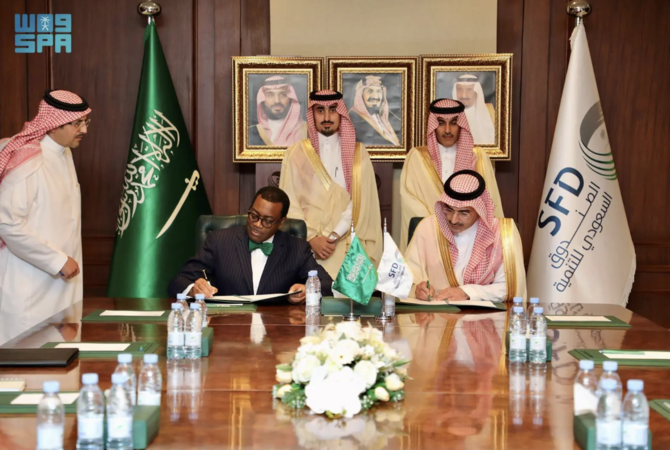
RIYADH: Developing African countries are poised to receive a funding boost for growth initiatives following a deal with the Saudi Fund for Development, aiming to foster sustainable progress.
The memorandum of understanding, signed with the African Development Bank Group, aims to promote mutual objectives and activities for sustainable international development between the two parties, the Saudi Press Agency reported.
This initiative aligns with SFD’s objective to enhance both social and economic growth by creating diverse opportunities.
Moreover, the newly signed agreement aims to facilitate the exchange of knowledge and experiences while advocating for optimal co-financing strategies. It will also support the attainment of sustainable development goals and optimize the impact of these initiatives.
Additionally, the MoU also aims to enhance collaboration in pursuit of shared goals that promote the expansion of crucial opportunities in diverse beneficiary African nations, ultimately contributing to global prosperity for the most impoverished and least developed communities.
Saudi Central Bank and BIS co-host meeting on reserve management in Riyadh
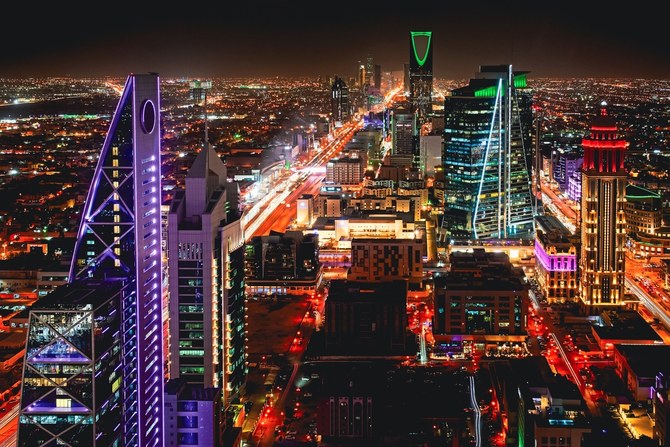
RIYADH: The evolving global landscape presents new challenges and opportunities for central bank reserve managers, the governor of Saudi Arabia’s apex financial institution explained at a high-level meeting.
Speaking at an event in Riyadh which was attended by the Bank for International Settlements, Ayman Al-Sayari set out his view on the complexities of the current macro-financial environment.
The two-day gathering, which began on April 28, brought together reserve managers and experts from central banks in the Middle East and North Africa region, as well as participants from other apex financial institutions, to discuss the latest trends in managing foreign exchange reserves.
The event served as a platform for participants to exchange insights, perspectives and expertise on the most critical aspects of reserve management through a series of panel discussions and keynote speeches.
In March, SAMA’s monthly statistics bulletin revealed that foreign assets of Saudi Arabia’s commercial banks surged by 22 percent in February, reaching a total of SR347.63 billion ($92.7 billion) compared to the same month of the previous year.
This rise reflects a significant expansion in the commercial institutions’ international holdings and investments.
The central bank added that its net foreign assets reached SR1.55 trillion in February.
Central banks’ foreign holdings are primarily for reserve management and monetary policy purposes, while commercial banks’ foreign assets are for business operations, customer services, and investment activities.
The report added that Saudi Arabia’s total reserve holdings amounted to SR1.62 trillion, representing a five percent decline compared to the same month of 2023.
DIFC records $2.6bn in gross written premiums, highest figure in its 20-year history
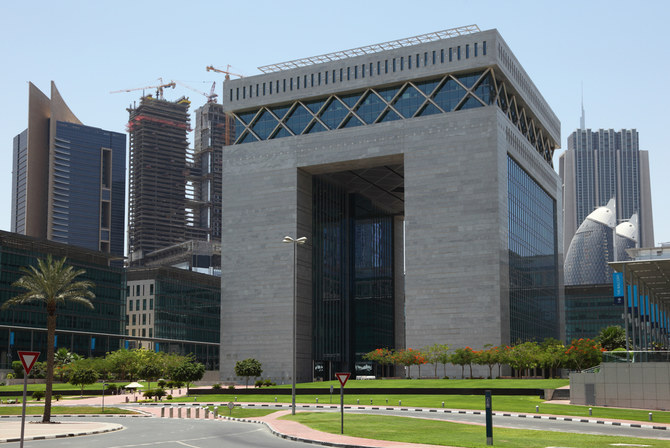
RIYADH: Dubai International Financial Centre recorded its highest gross written premiums in its 20-year history, amounting to $2.6 billion in 2023, marking a 23 percent increase from the previous year.
DIFC, a global financial center in the Middle East, Africa, and South Asia region, connects the fast-growing markets of the region with global economies and offers dining, retail, and living amenities, according to its website.
The center also recorded a 20 percent increase in the registration of insurance and reinsurance firms, including the first move of a Guernsey-based captive.
The Emirates News Agency reported that DIFC “has consolidated its position as the principal hub for the (re)insurance industry,” adding that DIFC’s appeal for managing general agents, representing 43 percent of new registrations, is a major factor shaping its insurance landscape.
This is credited to the center’s well-established regulatory framework, facilitating partnerships with cedants and brokers.
The influx of global insurers, reinsurers, and brokers, as well as captives, MGAs, and other industry stakeholders into DIFC, is driven by several factors. These include buoyant oil prices and increased infrastructure spending, as well as a focus on sustainable projects and low insurance penetration in the region.
Among the notable entities to join DIFC’s insurance sector in the past year are Alif Limited, Arc Insurance and Reinsurance Limited, and Barents Risk Management Limited. Joining them are BharatRe Global Ltd. and many more, it added.
Arif Amiri, CEO of DIFC Authority, emphasized the center’s role as a global industry hub, hosting over 120 registered insurers, reinsurers, captives, MGAs, and related entities.
The significance of DIFC’s stature in the insurance domain is further underscored by its co-hosting of the Dubai World Insurance Congress, featuring discussions on key themes reshaping the industry’s future, including innovation, capital attraction, and talent development.
In 2023, a survey conducted at DWIC revealed an 87 percent confidence in the Middle East, Africa, and Southern Asia market’s strategic opportunities. Property, health, energy, cyber, and liability lines of business were identified as holding the most potential. The survey also highlighted an 85 percent confidence rate in renewals and client retention.
Over two decades, DIFC has fostered the growth of the insurance and reinsurance industry, attracting talent and expertise to access key markets in the Middle East, Asia, and Africa.
The center hosts major insurance brokers, five of which are top ranked by the specialized insurance credit rating agency, AM Best. This has contributed to a significant 61 percent increase in brokered premiums compared to 2022, surpassing the $2 billion mark and solidifying DIFC’s position as a global market for insurance and reinsurance placements.
Dubai Real Estate Brokers Program attracts 25 strategic partnerships
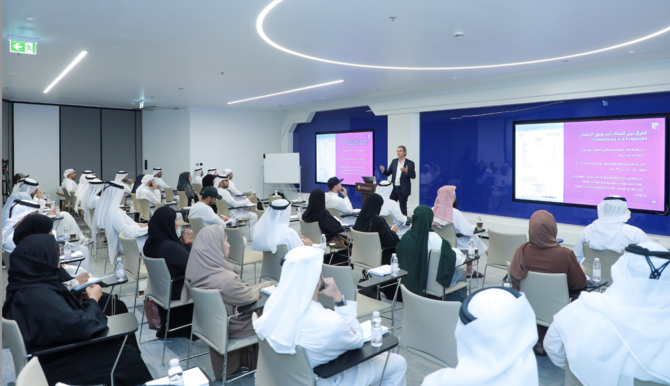
RIYADH: Dubai’s property market is set to grow, with the Real Estate Brokers Program securing 25 partnerships with brokerage companies and developers in the private sector.
According to a press statement, the first phase of the program, launched in mid-March and headed by the Dubai Land Department, also received over 1,000 registrations from Emirati citizens.
Dubai Real Estate Brokers Program aims to increase the proportion of citizen brokers from 5 percent to 15 percent over the next three years to enhance the participation of young citizens in the Emirate’s developmental initiatives across various key sectors.
“This reflects the early positive impact of the program, showcasing citizens’ aspirations and eagerness to engage as real estate brokers and acknowledging the pivotal role of Dubai’s real estate sector locally and globally,” said Marwan bin Ghalita, acting director general of Dubai Land Department.
The initiative also aligns with Dubai Social Agenda 33, which seeks to triple the number of Emiratis working in the private sector.
Ghalita added that the program will help young talents in the nation enhance their productivity, therefore contributing to Dubai’s economic growth.
“Dubai consistently offers outstanding examples of collaboration and synergy between the private and public sectors,” said Ghalita.
He added: “With the program’s enrollment exceeding 1,000 citizens and real estate companies continuing to join the strategic alliance within a short period, we are diligently working toward achieving all the ambitious goals of the Dubai Real Estate Brokers Programme. In particular, Emirati real estate brokers will increase from 5 percent to 15 percent over the next three years.”
The program also encompasses additional initiatives, including Emirati real estate broker licensing, encouraging property developers to allocate a portion of their sales to local agents, and empowering citizens in the property sector.
Under the partnership with the private sector, citizen participants will receive various support packages to enhance the competitive edge of UAE people and enable them to take up roles in the real estate sector.
The press statement added that efforts would also be made to allocate 10 percent to 15 percent of the development company’s sales to be marketed by Emirati real estate brokers, therefore contributing to the empowerment of national citizens by offering them employment opportunities in the property market.
Dubai ruler approves new $35bn airport terminal
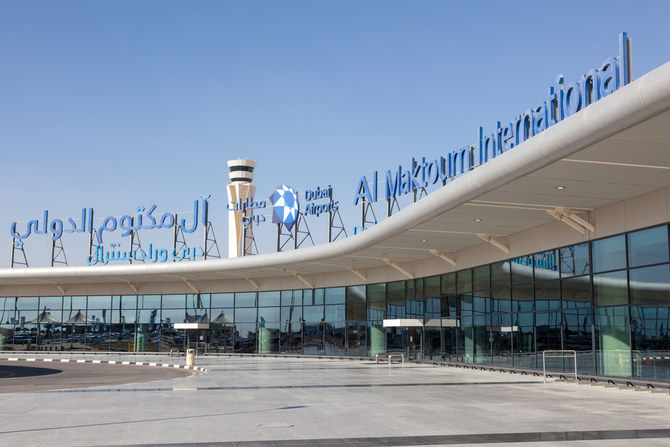
CAIRO: Dubai’s ruler Sheikh Mohammed bin Rashid Al-Maktoum approved a new passenger terminal in Al Maktoum International airport worth 128 billion dirhams ($34.85 billion), he said on Sunday in a post on X.
The Al Maktoum International Airport will be the largest in the world with a capacity of up to 260 million passengers, and five times the size of Dubai International Airport, he added, saying that all operations at Dubai airport would be transferred to Al Maktoum in the coming years.
The Al Maktoum airport will also include 400 terminal gates and five runways, he said.
The airport will be the new home of flagship carrier Emirates and its sister low-cost airline Flydubai along with all airline partners connecting the world to and from Dubai, Dubai state-owned airline Emirates chairman Sheikh Ahmed bin Saeed Al-Maktoum said.
The move “further solidifies Dubai’s position as a leading aviation hub on the world stage,” the CEO of Dubai Airports, Paul Griffiths, was quoted as saying by the Dubai Media Office.


